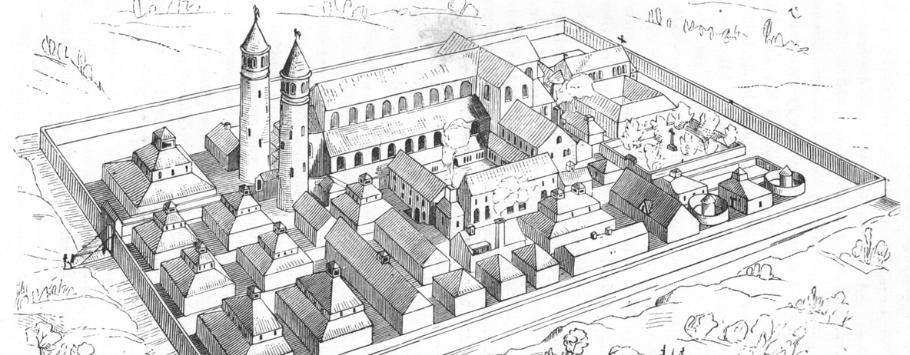The ascetic message of the hospital building

23 August 2023
What stories does a Western hospital building tell us about 'sick' and 'healthy' and how is the building itself used to heal people? Building consultant Hans Westerveld went back in time and came across the asceticism of fourth-century hermits, monks and bishops. They were the driving force behind the creation of the first hospitals here. This asceticism appears to be a common thread in his historical-philosophical research on hospital architecture. On 23 August, Hans Westerveld defended his thesis De ascetische boodschap van het ziekenhuisgebouw (The ascetic message of hospital building) at the University of Humanistic Studies.
Hans Westerveld has dealt with buildings for healthcare institutions throughout his career. In his doctoral research, he went in search of a dimension of the hospital that remains underexposed in his profession as a housing consultant: the building's meanings. These are passed on with stories.
He delved into three related questions:
- What meanings of 'sick' and 'healthy' do we find in hospital buildings and what ideas lie behind them?
- What means are used to talk about these meanings and the ideas behind them? This includes building features such as concepts, composition, imagery and materials, as well as construction methods and the technical equipment of buildings.
- In what ways does the building contribute to healing people? The building is not just a medium that tells a story, it wants to contribute to healing people again itself.
Christian notions
In our Western culture, all kinds of Christian notions still play a role that go way back, Westerveld said. "For example, the Christian interpretation of asceticism was a key driver for the founding of the first hospital. Over the centuries, this interpretation has been refined, condensed, and changed, but it is still recognisable." The study follows that process through time. Thus, Westerveld pauses at the monastery of Sankt Gallen, the hospital on the Moselle of the philosopher and theologian Cusanus, and examines the altarpiece of the hospital from Issenheim. He also visits Thomas Mann's sanatorium.
Contemporary examples
In the final chapters, he explores the ways in which ascetic thought permeates contemporary hospital buildings. "Today, this asceticism is articulated as a call to live focused and healthy lives. We need to detach ourselves from often unconscious behaviour with its bad habits, which are harmful to body and mind. This requires training the body and hardening the will. This call to exercise is accompanied by a promise of health and a vital old age. These replace the eternal life of earlier times."
Westerveld demonstrates this using two examples: the IJsselland Hospital in Capelle aan den IJssel, designed by Jan Tennekes, and the Nyt Hospital, currently under construction in Hillerød, close to Copenhagen. This building was designed by Swiss architectural firm Herzog and de Meuron, known for the Olympic Stadium in Being.
Hans Westerveld (1957) studied structural engineering at Eindhoven University of Technology, and was for many years an advisor in the healthcare field at consultancy firm Twynstra and Gudde. The thesis will be published in autumn as the trade edition by IJzer Publishers, entitled De Nieuwe Stad. De ascetische boodschap van het ziekenhuisgebouw.
You can download the thesis through our research portal (in Dutch, with an English summary at the end).
What stories does a Western hospital building tell us about 'sick' and 'healthy' and how is the building itself used to heal people? On 23 August, Hans Westerveld defended his thesis 'The ascetic message of hospital building' at the University of Humanistic Studies.
